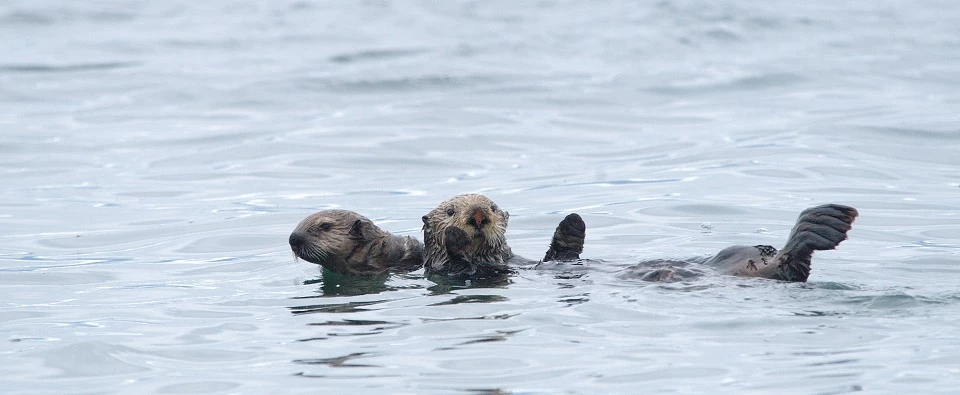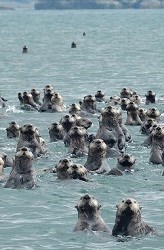
New ArrivalsSea otters, once nearly eliminated by fur hunters, have made a spectacular comeback throughout the North Pacific following protection in 1911 and reintroductions in the 1960s. But until recently, otters had not found their way into Glacier Bay. Now that has changed - presenting the National Park Service with a unique opportunity to understand more about the effect of the otters' return on the ecosystem. Rapid Population GrowthSince 1995 when the first five otters were observed in Glacier Bay, the population has grown to an estimated 8,000 individuals. Most of these animals are concentrated in lower reaches of the Bay. Sea otters consume large quantities of clams, mussels, crabs and other invertebrates, some of which are commercially, culturally or ecologically important. Scientists have long known that increased predation on these species can cause long-term changes that ripple through the ecosystem. 
ReproductionAlaska sea otters typically bear their pups in late spring ― one pup per breeding cycle. But, depending on the availability of food, breeding may occur every other cycle. Pups weigh only a few pounds at birth, typically 3-5 pounds (1.4-2.3 kg) and are light brown. They live on top of their mothers, literally, until they are weaned. That's where they eat, sleep and how they travel, although otters usually don't roam far, unless they've run out of food. ThreatsMany sea otters live15–20 years. Orcas are a primary predator of adult otters, and newborn otters are sometimes preyed upon by bald eagles.The greatest threat to the sea otter remains humans. It has been estimated that the 1989 Exxon Valdez oil spill caused the deaths of more than 2500 sea otters. Otters are also caught in fishing nets, and hunted for subsistence by Alaskan Natives. What Impact Might an Otter Have on Glacier Bay?Sea otters inhabit near shore waters that are less than 54 m (177.17 feet) deep. Their habitats are near reefs, rocky shores and thick kelp forests. These kelp forests are dependent on the otter to protect them from excessive grazing by the otters' prey. Increased and rapid otter colonization in Glacier Bay is due to the immigration of adults and juveniles and to reproduction, as evidenced by the increasing number of dependent pups. As sea otters continue to colonize Glacier Bay, dramatic changes will most likely occur in the type, abundance and size of many species in the nearshore marine ecosystem. Since sea otters were not seen here before 1995, Glacier Bay provides the perfect opportunity to study an area before and after their introduction and learn exactly how these changes occur. In order to accurately describe and understand the magnitude of the otters' likely effect on the region's ecosystem, researchers are currently studying:
These studies will enable park managers to differentiate naturally occurring changes from those that are human-induced. More Otter Research in Glacier Bay: Southeast Alaska Inventory & Monitoring Network: Sea OttersSea Otter Content on NPS.gov |
Last updated: September 8, 2025
